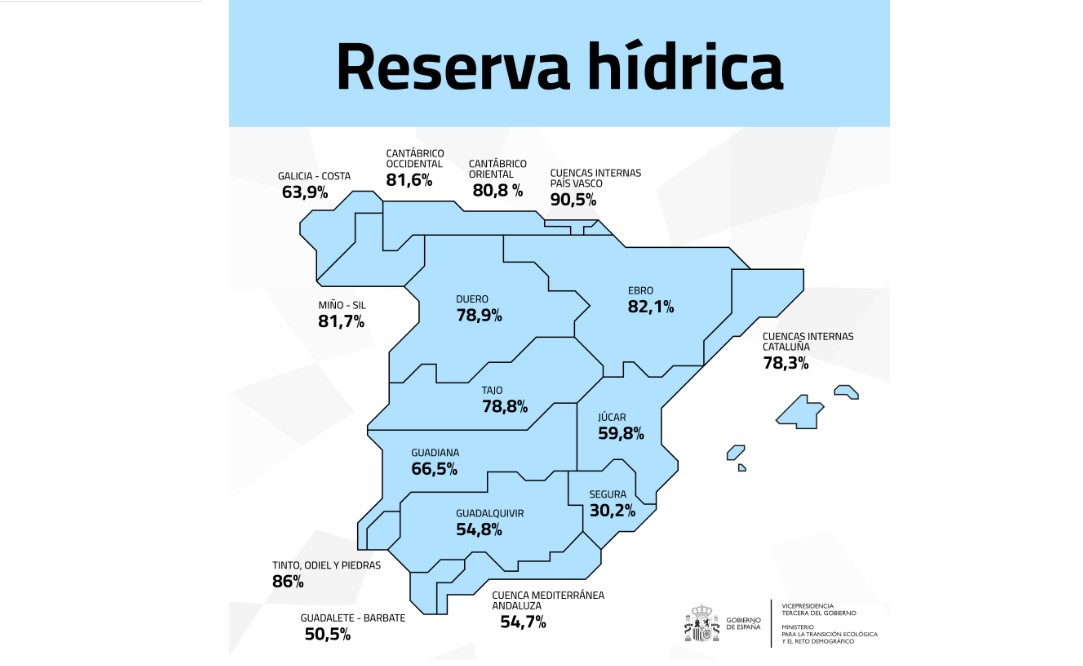Spain’s reservoirs have recorded a decline in their water levels for the sixth consecutive week, marking the sharpest weekly drop of the entire year. With a decrease of 2.5 percentage points, equivalent to 1,376 cubic hectometers of water in just seven days, the situation might seem concerning at first glance. However, the reality paints a more nuanced picture: Spain’s water reserves are still in good condition following the rainy spring, with levels up to 8 points higher than those recorded during the same period last year.
Current Data and Comparisons: An Overview
These figures come from the latest releases by the Ministry for Ecological Transition, which updates reservoir levels weekly. Although recent rainfall has “significantly” affected the entire peninsula—with a peak of 47.6 liters per square meter in Daroca, Zaragoza—it has not been enough to halt the decline in water levels. Persistent heat has taken its toll, and the reserve now stands at 39,493 cubic hectometers, representing 70.5% of its capacity.
Compared to the previous year, the positive development is evident: in July 2024, reservoirs recorded only 35,162 cubic hectometers of water, which was 62.7% of their capacity. Even more impressive is the comparison with the average of the last decade, which for this July week was 59.24% (around 33,000 cubic hectometers). Current values are thus up to 11 points above this long-term average.
Regional Differences: Some Basins Particularly Affected
Of the 16 hydrographic basins on the peninsula, 14 are experiencing a general decline in water levels. Only the internal basins of the Basque Country (90.5%) as well as Tinto, Odiel, and Piedras (86.0%) maintained their previous week’s levels. The Basque Country continues to lead the list of basins with the best figures in all of Spain.
The Duero basin recorded the sharpest decline, down 7.7 points, now at 78.9% of its capacity. Coastal Galicia fell by 3.5 points to 63.9%, while Western Cantabrian and Ebro each experienced a drop of 2.9 points, now at 81.6% and 82.1% respectively. The Tagus dropped two points to 78.8%, while Miño-Sil (81.7%) and the internal basins of Catalonia (78.3%) both saw a decline of 1.9 points. Finally, the Segura basin remains the one with the lowest water levels in Spain at 30.2%, having lost another 0.4 points this week.
Despite the recent decline, overall forecasts for Spain’s water supply remain optimistic, especially compared to previous years. Current fill levels provide a solid foundation to withstand the coming weeks of summer heat.




